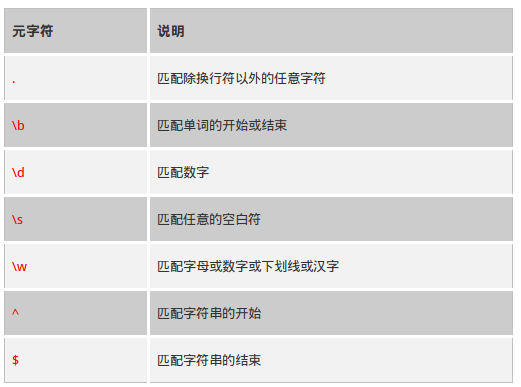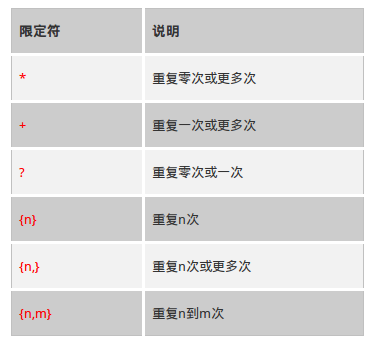1.什么是正则表达式
在编写字符串的处理程序时,经常会有查找符合某些复杂规则的字符串的需要。正则表达式就是用于描述这些规则的工具。换句话说,正则表达式就是记录文本规则的代码。
通常,我们在使用WINDOWS查找文件时,会使用通配符(*和?)。如果你想查找某个目录下的所有Word文档时,你就可以使用*.doc进行查找,在这里,*就被解释为任意字符串。和通配符类似,正则表达式也是用来进行文本匹配的工具,只不过比起通配符,它能更精确地描述你的需求——当然,代价就是更复杂
正则表达式中有一个关键的点就是元字符,所以我从网上查到了一个元字符的表格:

还有在正则表达式的基础应用中的限定符的应用

-----------------delegetes关键字-------------------------------------------------
这个关键字我理解为是一种功能函数实现的委托,类似C++/C中的函数指针,委托是类型安全的,而且支持加法,也就是功能的叠加
既可以实现单一委托:
using system; public delegate void testdelegate(string message); //declare the delegate class test { public static void display(string message) { console.writeline("the string entered is : " + message); } static void main() { testdelegate t = new testdelegate(display); //instantiate the delegate console.writeline("please enter a string"); string message = console.readline(); t(message); //invoke the delegate console.readline(); } }
也可以实现多重委托
using system; public delegate void testdelegate(); class test { public static void display1() { console.writeline("this is the first method"); } public static void display2() { console.writeline("this is the second method"); } static void main() { testdelegate t1 = new testdelegate(display1); testdelegate t2 = new testdelegate(display2); t1 = t1 + t2; // make t1 a multi-cast delegate t1(); //invoke delegate console.readline(); } }